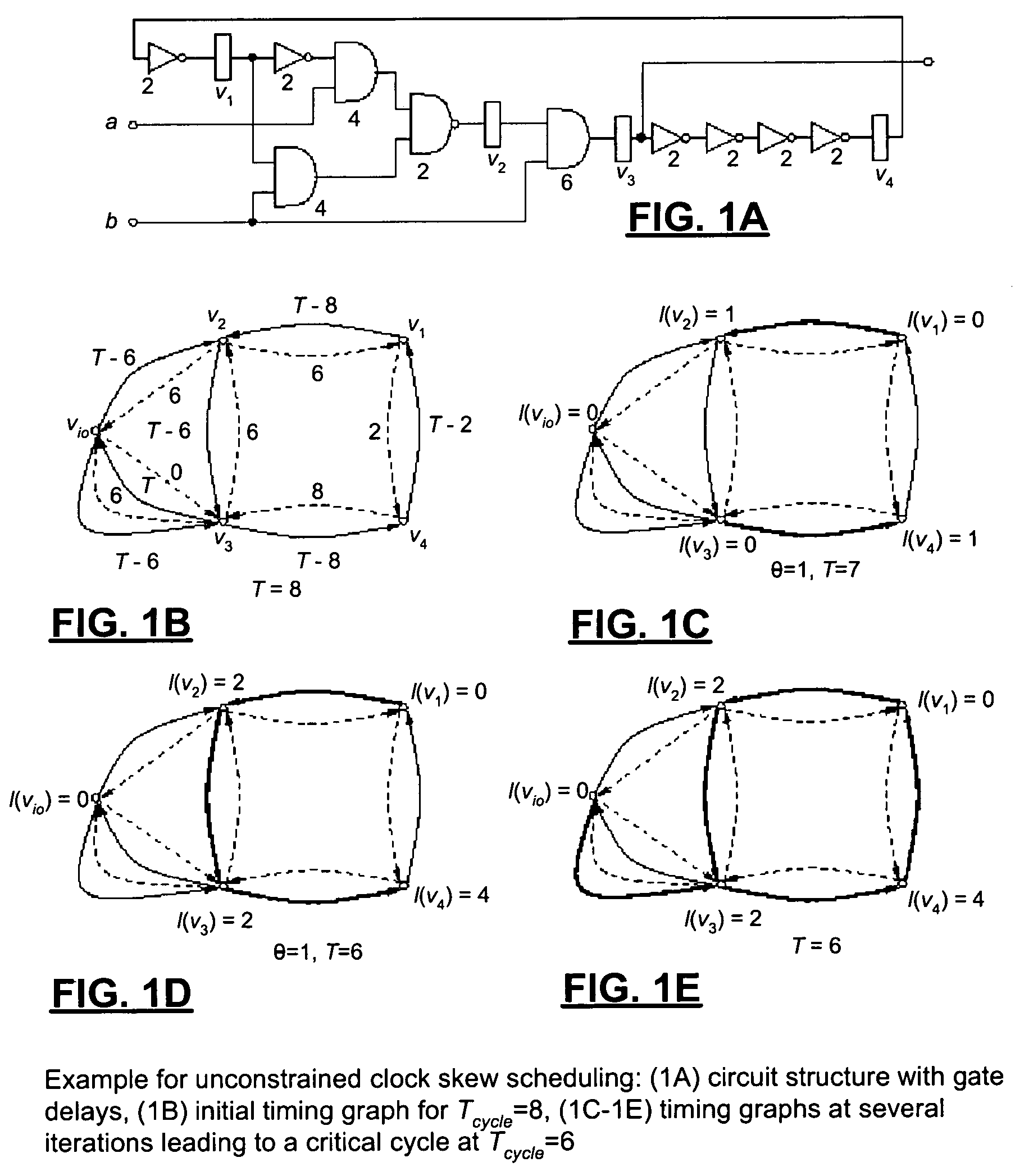Multi-domain clock skew scheduling
a multi-domain clock and scheduling technology, applied in the field of multi-domain clock skew scheduling, can solve the problems of significant limitation of the application of general clock skew scheduling is practically limited, etc., and achieve the effect of increasing the implementable optimization potential of the clock adjustment and limiting the optimization potential of the circuit design
- Summary
- Abstract
- Description
- Claims
- Application Information
AI Technical Summary
Benefits of technology
Problems solved by technology
Method used
Image
Examples
Embodiment Construction
[0018]The present invention is now described first by looking at unconstrained clock skew scheduling which is then extended to the constrained case.
[0019]Given a sequential circuit, the objective of generic clock skew scheduling is to determine an assignment of latencies to registers in order to minimize the clock period, while avoiding clocking hazards. Let G=(V,Esetup,Ehold) denote the timing graph for a sequential circuit. The set of vertices V corresponds to the registers in the circuit and includes a single vertex for all circuit ports. The sets Esetup⊂V×V and Ehold⊂V×V denote the setup edges and hold edges, respectively. Esetup contains for each set of combinational circuit paths between registers (or a port) u and v a directed edge e=(u,v) with weight w(u,v)=Tcyle−dmax(u,v)−dsetup(v), where dmax(u,v) represents the longest combinational delay among all paths between u and v, dsetup(v) denotes the setup time at v, and Tcycle is the cycle period. Ehold consists of a set of reve...
PUM
 Login to View More
Login to View More Abstract
Description
Claims
Application Information
 Login to View More
Login to View More - R&D Engineer
- R&D Manager
- IP Professional
- Industry Leading Data Capabilities
- Powerful AI technology
- Patent DNA Extraction
Browse by: Latest US Patents, China's latest patents, Technical Efficacy Thesaurus, Application Domain, Technology Topic, Popular Technical Reports.
© 2024 PatSnap. All rights reserved.Legal|Privacy policy|Modern Slavery Act Transparency Statement|Sitemap|About US| Contact US: help@patsnap.com










